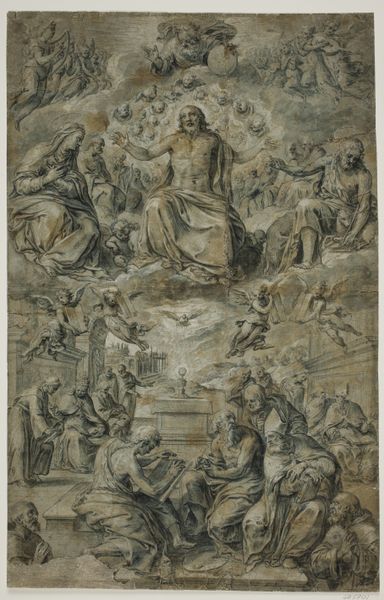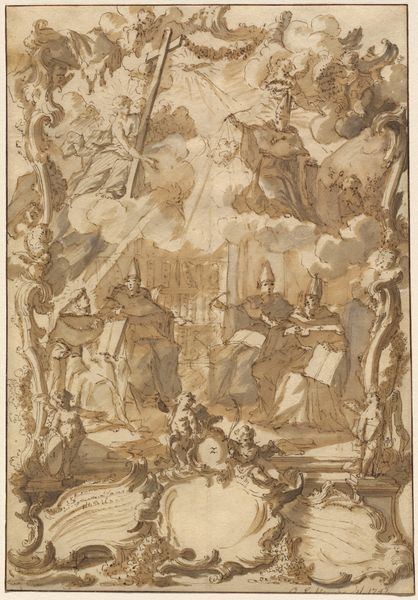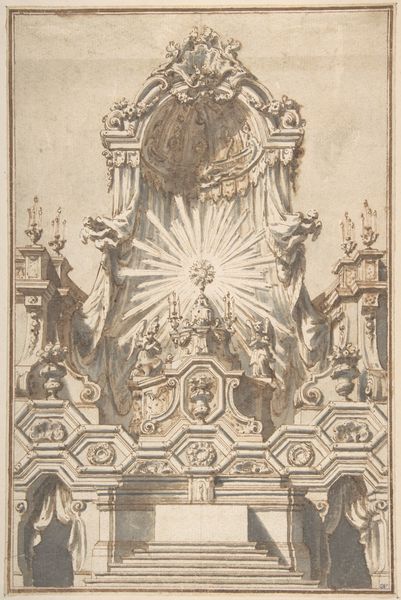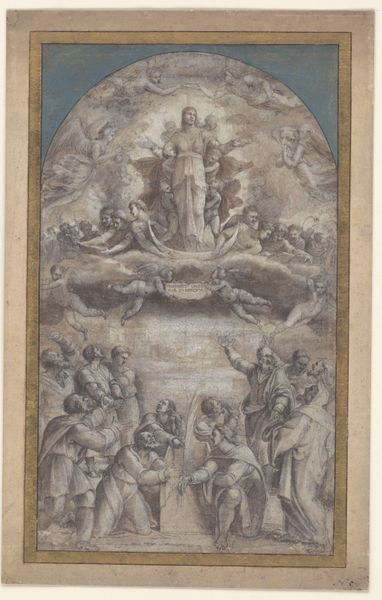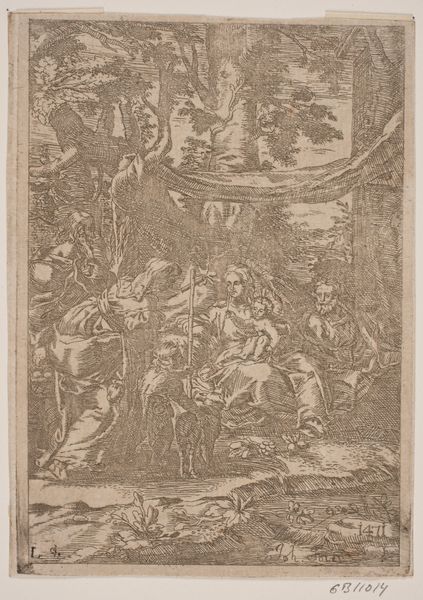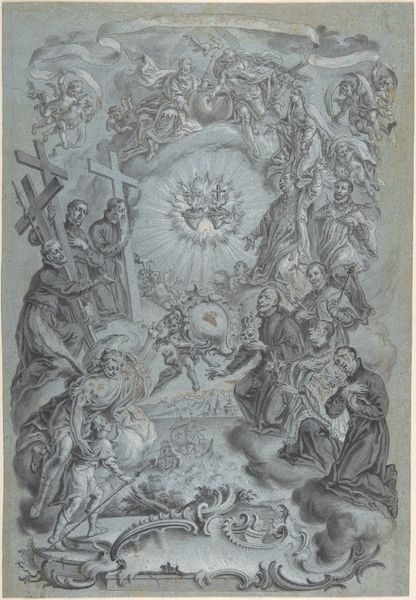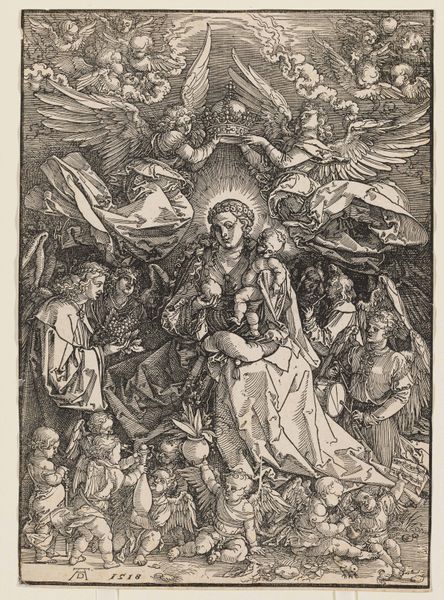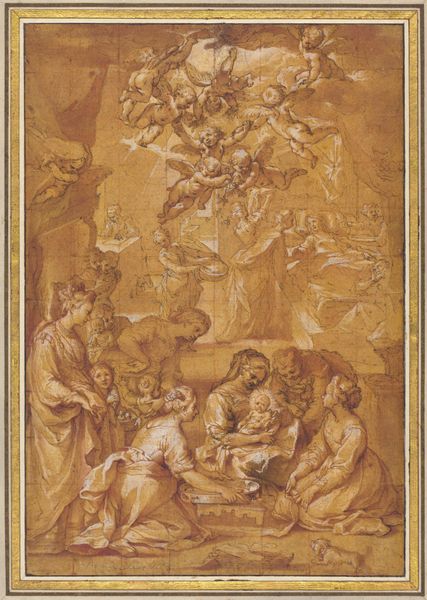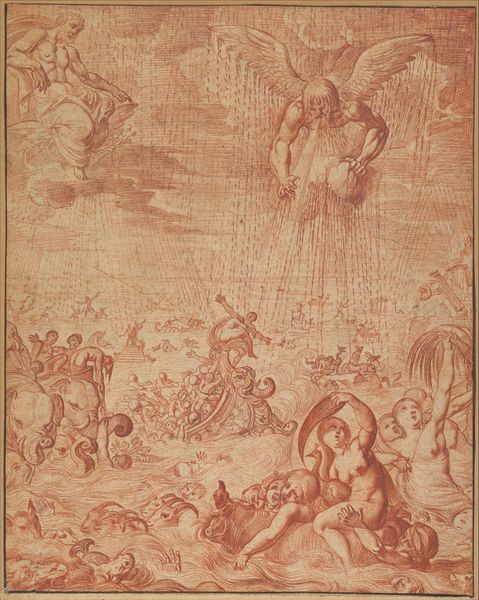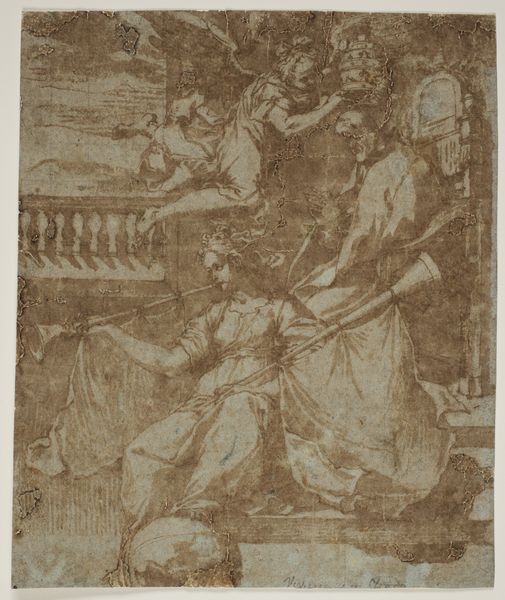
drawing, print, etching, ink
#
drawing
#
baroque
# print
#
etching
#
figuration
#
ink
#
history-painting
Copyright: Public Domain
Editor: This is Jacques Callot’s “Assumption of Mary,” from around 1631, an etching in ink. There's a clear contrast between the solid figures on earth and the more ephemeral ones ascending. What strikes me most is how the composition directs our gaze upwards, inviting a sense of reverence. What do you see in this piece? Curator: Callot masterfully uses symbols that resonate across centuries. Note how Mary isn't simply floating, but is borne aloft by a swirling mass of angels, their forms almost cloud-like. This evokes a sense of divine transport, reminiscent of earlier Byzantine depictions of heavenly ascension. But consider also the earthly figures. They are not merely witnesses; their expressions—the raised hands, the tilted heads—imply a shared belief, a cultural memory of the miraculous. How does their posture influence your interpretation? Editor: I think their posture emphasizes the communal aspect of faith; they're united in witnessing this miracle. It’s interesting how the composition places them as foundational to the ascending figure, suggesting the importance of the community in relation to the divine. Curator: Precisely. This grounding emphasizes continuity and shared values. Etchings like these functioned as powerful visual catechisms, reinforcing collective faith through accessible imagery. Notice too the relatively crude and unfinished effect, typical of some of his smaller prints; these weren't necessarily meant for the aristocratic collector. What’s the emotional impact of that accessibility, do you think? Editor: The raw quality makes it feel more immediate, relatable, maybe even personal despite the grand subject matter. It loses some of the polish you’d expect but gains a different kind of strength. Curator: Exactly! It allows a more direct emotional connection. Looking at this, I'm struck by how Callot distills complex theological concepts into a powerful, readily understood image, one that carries centuries of cultural and psychological weight. Editor: I hadn't thought about it that way before. It’s much more than just a religious scene; it's a reflection of shared cultural values. Thanks for pointing that out.
Comments
No comments
Be the first to comment and join the conversation on the ultimate creative platform.
